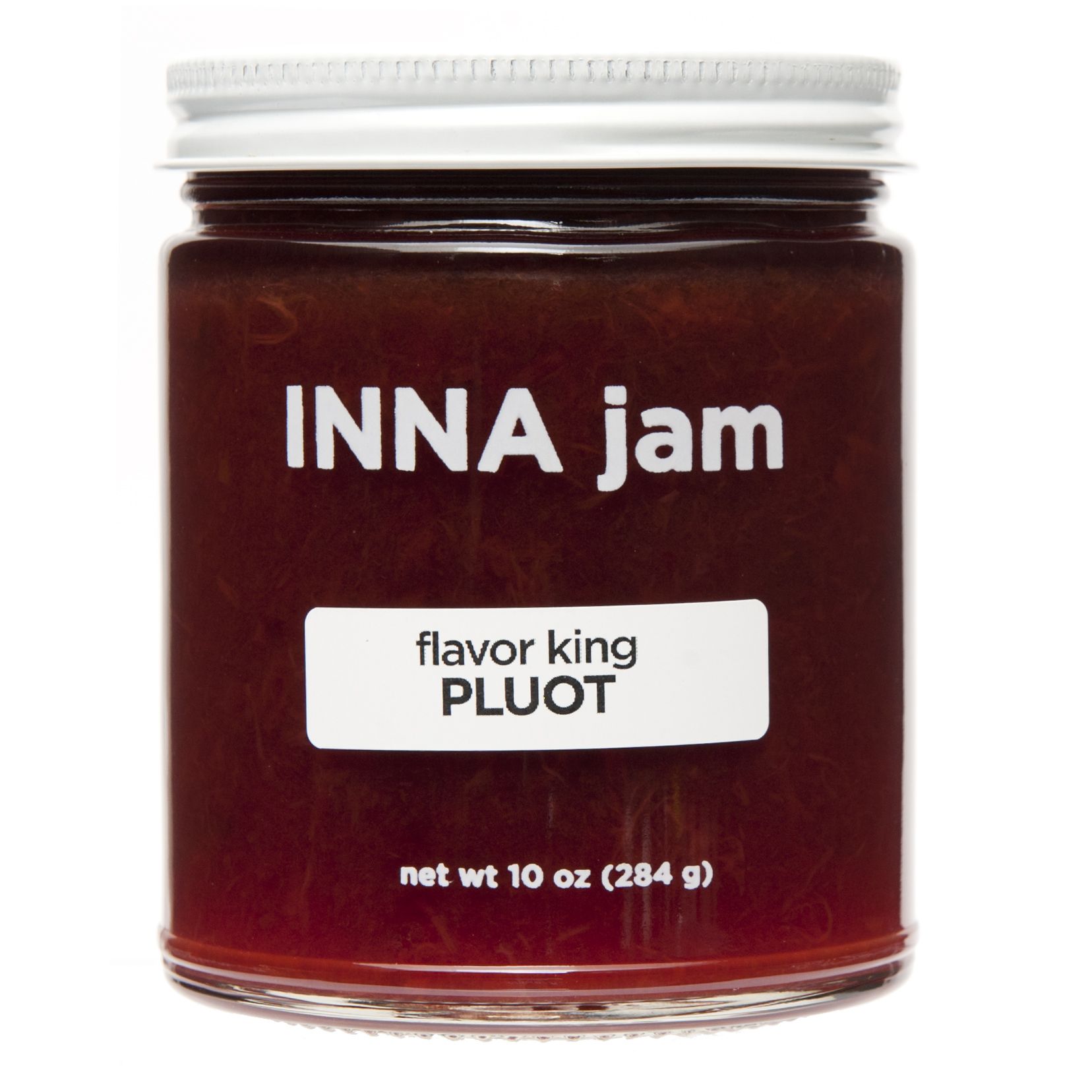Dapple Dandy Pluot

Dapple dandy pluot
The Dapple Dandy Pluot® tree is a new and distinct variety of interspecific plums. This hybrid's fruit are referred to as 'dinosaur eggs' due to the pale green to yellow coloring with red molting. The flesh is a creamy pink color with a spicy, plum-apricot flavor and a nice acid to sugar balance.
What does Dapple Dandy Pluot taste like?
This large freestone fruit is also called 'Dinosaur Egg'. When the incredibly sweet and delicious red and white flesh is ripe, the yellow/green skin turns a dappled maroon and yellow. A frequent taste test winner for its distinct Plum-Apricot flavor.
Does Dapple Dandy Pluot need a pollinator?
Pollination: The Dapple Dandy Pluot requires pollinators such as the Flavor King Pluot, Santa Rosa Plum, Methley Plum, Burgundy Plum, or Late Santa Rosa Plum trees.
What pollinates a Dapple Dandy Pluot?
Dapple Dandy Pluot gets its name from the beautiful red dappled spots that appear on its greenish-yellow skin. Fruits are freestone and the flesh is a spectrum of red to pink from the outside in with a glorious plum-apricot flavor. Pollinate with another pluot or Santa Rosa plum for best fruit set.
What is the sweetest pluot?
Flavor King: These pluots have deep red skin, light orange flesh, and a slightly spicy flavor. 7. Flavorosas: One of the sweetest, juiciest pluots, the Flavorosa has red flesh and dark purple skin.
Do you eat the skin of a pluot?
Pluot are great for out of hand eating. You eat the outer size, no peeling necessary. The pits inside are smaller than peach pits, so there is more fruit to be had. For those that are turned off by the tartness you find in the skin of a lot of plums, you will find that pluot bring more sweetness to the table.
What is the best tasting pluot?
Dapple Dandy pluots are available mid-July to early August. The best pluot variety we grow! A dark-skinned pluot with red flesh, it has an intense rich flavor combined with sweet, spicy tones that are reminiscent of the Santa Rosa.
Do you refrigerate pluots?
They continue to ripen after picking and should be stored at room temperature, away from sunlight and heat until they give softly to the touch and have a sweet aroma. Once ripe, refrigerate pluots as necessary to prevent spoiling, but cold temperatures may change their texture and taste.
Is pluot fruit healthy?
Summary. Pluots are high in natural sugars but their fiber helps keep them from causing blood sugar spikes. Pluots are also low in fat and provide a good amount of vitamin C and potassium.
How long does it take a pluot tree to produce fruit?
Trees should bear fruit in 3-4 years, with full fruiting in 5-7 years. Can I grow pluot trees in my zone 10 garden?
Where do pluot trees grow best?
Pluots were developed in California but grow very well in the stonefruit areas of New Zealand – commercially they are grown with plums in the orchards of Hawkes Bay and Central Otago, so you could assume they like cold dry winters and hot dry summers.
Do pluot trees need full sun?
But don't bend the rules on sun and soil—most fruit trees (including pluots) require six to eight hours of full sun a day and extremely well-draining soil (no clay, please!). Dig a hole that is two times the width and height of the root system and amend copiously with compost.
How much space does a pluot tree need?
Space trees at least 18 feet apart. Soak the root zone of the trees in water for 1 to 2 hours before planting. Dig a hole 18 inches deep and wide, breaking up any compacted soil in the process. Prune the trees back to 30 inches tall at planting, focusing on cutting side branches back to 3 to 4 buds.
How long does a pluot tree live?
The average lifespan for cultivated plum trees is 10 to 15 years, according to the Lady Bird Johnson Wildflower Center's website.
How much water does a pluot tree need?
Once every 10 days or two weeks is plenty. Worse than dry, thirsty roots is waterlogged, drowning roots. Although a little depression in the soil aids summer watering, it's important to bring the soil around the tree up to the level of the surrounding soil for the winter.
What is the difference between a pluot and a Plumcot?
Zaiger bred the plumcot with a plum to create the pluot — three-fifths plum and two-fifths apricot — and coined the trademarked moniker. While the plumcot is a simple plum and apricot cross, pluots and apriums (70 percent apricot and 30 percent plum) are the result of intricate crossbreeding over several generations.
When should you eat a pluot?
This tasty fruit is in season between spring and fall, and that's when you'll find them at their juiciest. Select fresh pluots just as you would a plum.
How do you know when a pluot is ripe?
A ripe Pluot should be plump, firm, and fragrant, with rich color. It should give slightly when pressed gently at the stem end. Pluots that aren't quite ripe can be stored at room temperature in a loosely closed paper bag, where they'll ripen in a few days.
Can diabetics eat pluots?
Not only can someone with diabetes eat plums, but the sweet fruit has a low-glycemic index, which means, despite their sweet taste, eating them won't cause a rapid rise in blood sugar.
Do pluots taste like plums?
A pluot is mostly plum with a bit of apricot mixed in. You get a firm plum-like texture and a decidedly apricot flavor. "Pluot" was trademarked by the Zaiger family in the '80s, so you'll also find pluot varieties that go by other names such as Dapple Dandy, Geo Pride, or Flavor Supreme.











Post a Comment for "Dapple Dandy Pluot "